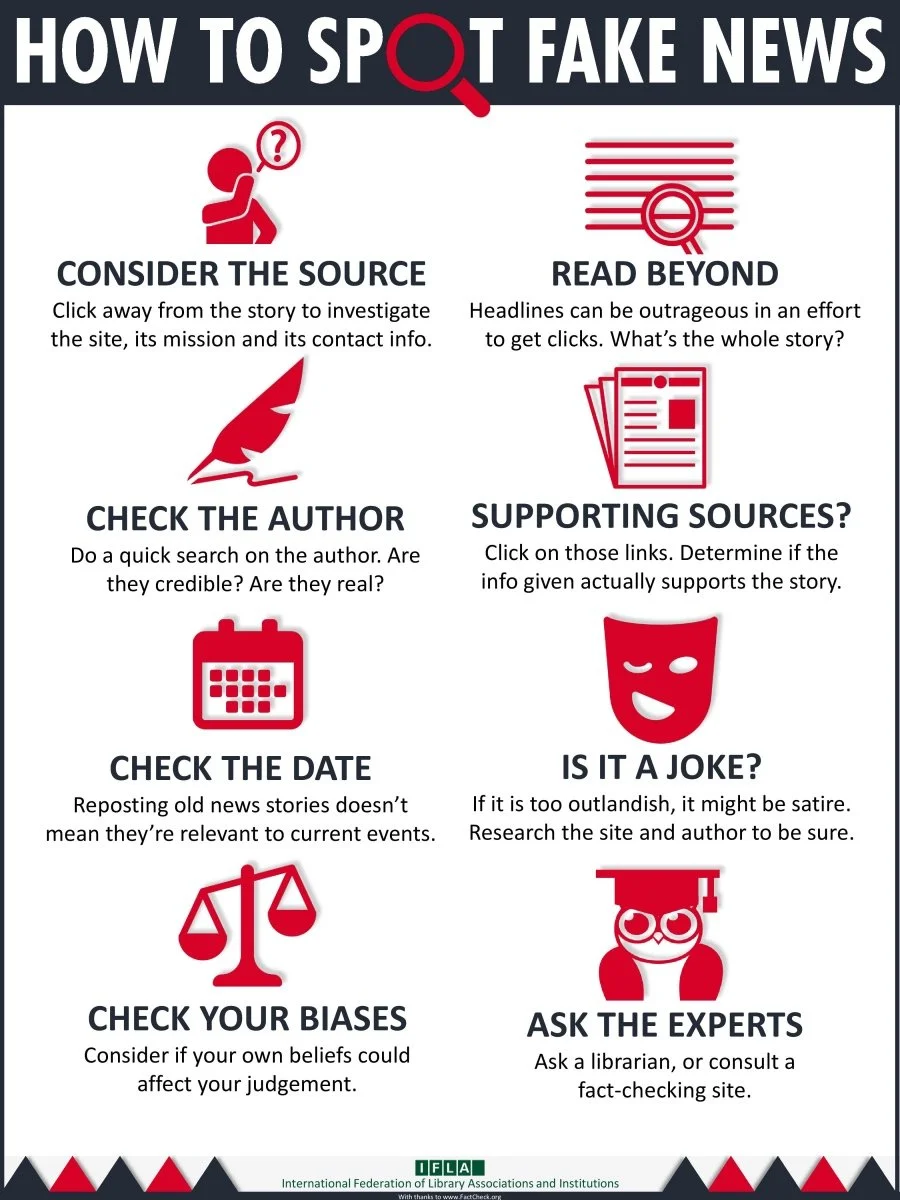How to Check for Reliable Sources
CRAAP: Not all information is good information, especially online! CRAAP Test provides a list of questions to ask yourself when deciding whether a source is credible enough. This can let you reflect on relevant & reliable information & prevent you from spreading unintended misinformation to others.
C: Currency
The timeliness of the information - when was the information published?
Has it been revised or updated?
Is there more recent information on the topic? Would older sources be beneficial as well?
Is it accessible from a functional link?
It’s important to read the relevant information, & you need the history & effects experienced to create a good argument/point to your peers or counsel.
R: Relevance:
Does it relate to the topic?
Who is the intended audience? Will it relate to them?
Is the information written in an accessible way for your viewers’ language & vocabulary??
Have you looked at a variety of sources before selecting one to use?
The information must be relevant & understanding your target audience is imperative or will be less impactful.
A: Authority:
What is the source of information? Who made it? What are their credentials & affiliations?
Are they qualified to talk about what they have written?
Is there contact information for a publisher or an email address?
Does the URL reveal anything about the author or source?
Make sure your sources are credible & support the cause you are learning about & writing about.
A: Accuracy:
Is it reliable, truthful, & correct? Where does the information come from?
Does the evidence support the information?
Has the information been reviewed or referred? Can you verify any of the information from a different source?
Does the language or tone seem unbiased?
Are there grammatical errors, typing errors or spelling errors?
To relay this info to others & for yourself, it should be accurate & truthful, otherwise, misinformation can harm your cause.
P: Purpose:
What is the reason the information exists?
What is the purpose of the information? Is it to inform, sell, teach, entertain or persuade?
Is the info propaganda, fact, or opinion?
Does the author make their intentions clear? Is the point of view objective & impartial?
Are there political, ideological, cultural, religious, or institutional biases?
It’s important to know the author’s research motives & sources. It can do more harm than good by sharing misinformation.
FAKE NEWS: Some of the toughest parts about finding resources for new movements & deciding which side of an issue you want to be a part of, is the abuse of misleading information in the media. With many politically driven websites & major news sites, the narrative can change rapidly.
Learning From Well-Informed Individuals:
Aside from online or written literature, the best way to understand the history of minority groups, such as BIPOC, or LGBTQIA+, is to speak with them directly. To get honest information, you must seek information from well-informed individuals & those most informed are the ones who have been marginalized themselves. There are many ways to contact people, including speaking to people you meet at rallies or protests. Additionally, you can reach out to authors of websites or books, or speakers on podcasts & gain more information from them. Speaking with knowledgeable individuals, hearing their stories, & asking specific questions are some of the best sources of credible information available. They have lived it, know someone impacted by history & can only hold the dialogue necessary for others to acquire.
Examples of Reliable Sources
Black Lives Matter
Colonialism & its Impacts
More Than Words
Save the Children
What Does “Every Child Matters” Mean?
Yellowhead Institute

